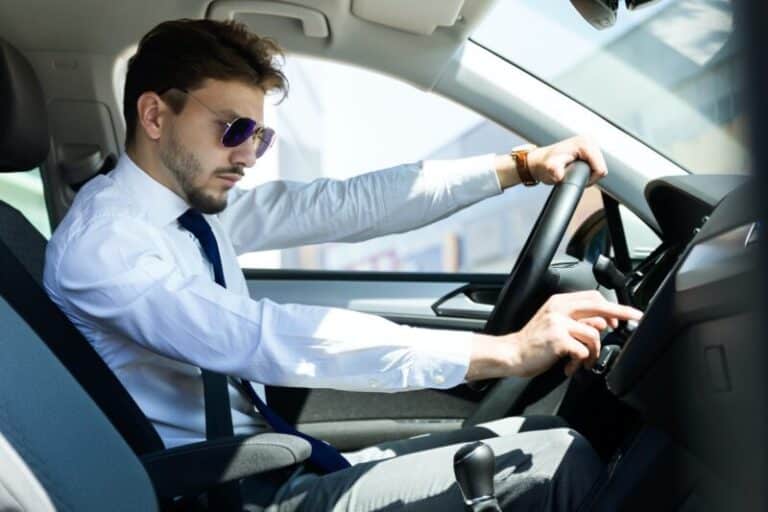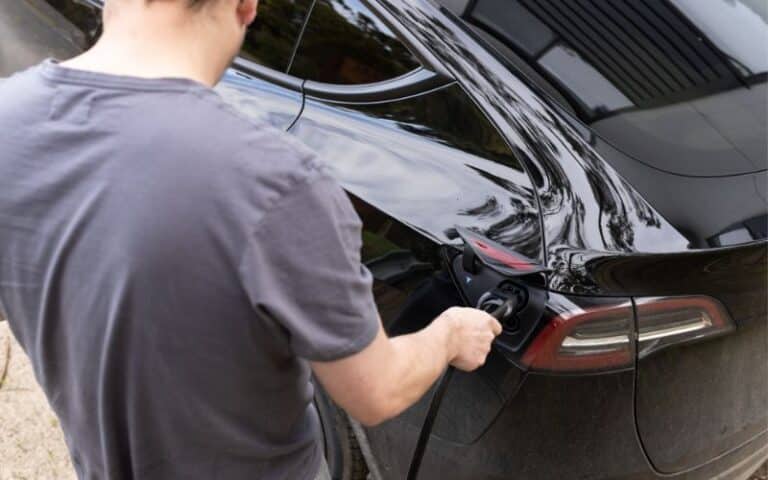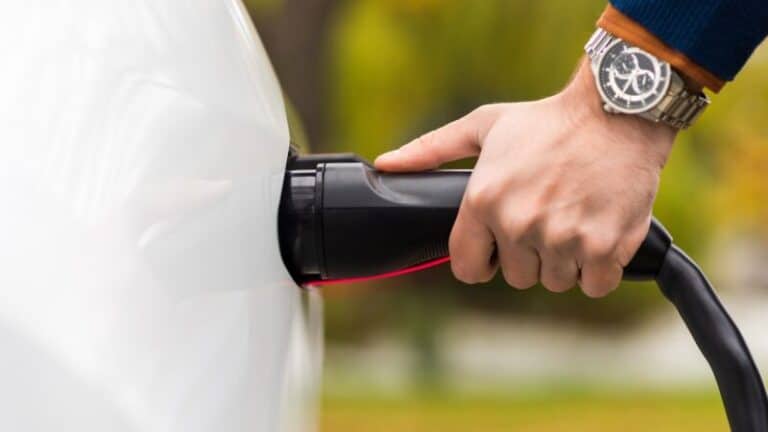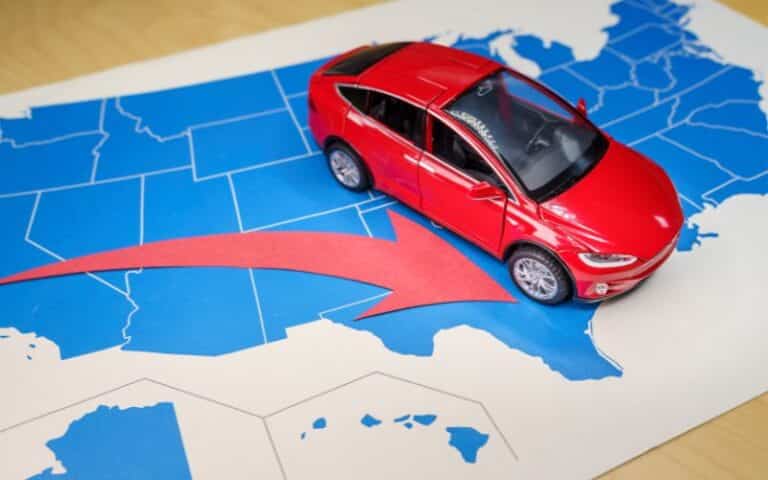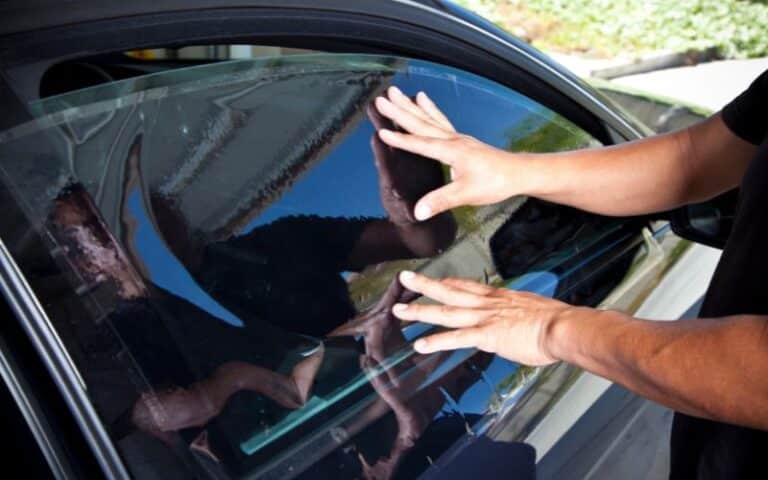Why Does Tesla Have a Glass Roof? (Explained)
The all-glass panoramic roof has become one silent signature design feature of Tesla. While the innovative design is intriguing and mind-blowing, it raises many concerns.
Seeing that you’re here, you must be wondering why Tesla used so much glass in their vehicles. Let’s look at the reasons for the all-glass roof design.
One of the many reasons for the Tesla glass roof is that it helps to improve the car’s energy efficiency, especially during colder months. Also, the glass roof drastically reduces noise inside the vehicle by blocking outside sounds. The glass roof of Tesla cars comes with more intriguing benefits than meets the eye.
Are you trying to figure out why Tesla designs their cars with that sleek glass roof? Well, you’re in the right place!
In this article, I’ll reveal the reasons Tesla designed its cars with glass roofs. Also, alongside the benefits are some downsides to consider. Sit tight!
Why Does Tesla Have Glass Roofs?

The all-glass roof of Tesla cars is a key part of Tesla’s sustainability and energy efficiency initiatives.
Although the Tesla glass roof appears futuristic and stylish, it has many practical benefits. As mentioned above, the all-glass roof is a hallmark of the energy efficiency initiatives of Tesla.
The panoramic sunroof allows sunlight inside the car, which significantly regulates the temperature of the inside cabin, especially in colder months.
With this feature, there’s little workload on the car’s inbuilt climate control system.
In like manner, the glass roofs have some degree of heat rejection—another fantastic reason for the glass roof.
The glass panel of the vehicle provides enough insulation to provide comparatively the same level of heat and UV protection.
The heat rejection feature is one reason Tesla cars are more energy-efficient than other electric vehicles.
Secondly, the glass roof, according to design, is soundproof. With the glass roof, the inside of the car is much quieter, allowing better operation and communication.
However, there are exceptional cases where it is less effective than traditional roofs.
Also, the open glass roof makes the interior of the car cabin feel open and very spacious. All the natural lights make the interior roomier than in the real sense.
The glass roof has an edge in terms of view relating to the driving experience. The roof lets in light that provides a clearer day and night view.
Another amazing benefit of glass roofs in Tesla vehicles is less weight compared to previous versions.
Finally, it’ll amaze you that this feature allows the model to offer better drive range and performance.
Do Tesla Glass Roofs Have Any Technical Advantage?
Certainly, there are several technical advantages to this design.
One of the technical advantages of glass roofs in Tesla cars is that the roof improves handling by reducing the center of gravity.
Also, according to Tesla engineers, glass roofs offer better protection from UV rays. The glass panel allows sunlight to enter the car but also blocks harmful UV radiation.
The glass roof, as wrongly assumed, isn’t just for looks; there are many practical benefits.
Glass roofs in Tesla cars have proven to reduce passengers’ claustrophobia significantly. It does so as it allows natural light to fill the vehicle, which improves the overall ambiance and mood.
Another technical advantage of a glass roof is the reduced weight of the vehicle.
The reduced weight of the vehicle goes a long way in improving performance, seeing that Tesla vehicles are EVs.
Finally, Tesla glass roofs make it difficult for thieves to break in. The glass is very durable and hard to scatter or pierce. Isn’t that just unbelievably amazing?
The list will continue on and on again. However, there are some downsides to the Tesla glass roof.
The table below contains a few pros and cons of the Tesla glass roof design.
| Pros | Cons |
|---|---|
| Glass roofs give an aesthetic beauty and view to the car. | It often requires tinting and special glass coatings. |
| Tesla cars with glass roofs have lesser weight compared to their previous version. | It is ineffective against heat protection in extremely hot conditions. |
| Glass sunroofs are durable and less susceptible to damage. | It is quite an expensive design. |
| Glass roofs reduce the need for artificial lights, which increases energy efficiency. | Glass roofs give room for potential distractions. |
Do All Tesla Have Glass Roofs?
No, not all Tesla models come standard with an all-glass roof. It is an exclusive reserve for some Tesla models.
However, the glass roof design is standard on all Tesla models, from Model 3 to Model X. In other words, the Tesla Model Y also comes standard with a full glass panel rooftop.
Tesla Model S also adds to the list of Tesla models with glass roof designs. One common advantage of the design, as seen in all the above Tesla models, is the extra bedroom in the car.
The extra room is more evident in the new upcoming Tesla cybertruck. The prototype also has a black glass roof with a black cover from the new shot of the Tesla cyber truck in California.
While part of the roof is glass, the other is a tonneau cover. It’ll amaze you to know that the cover is reportedly retractable and strong enough to withstand a person’s weight.
The glass roof is a key signature for Tesla in the models mentioned above with glass roofs. It complements the modern-age technology-focused design of Tesla vehicles.
Nevertheless, the all-glass panoramic roof on the vehicles serves a purpose beyond aesthetics.
The innovative design provides many practical benefits to these Tesla models for drivers and passengers. With the glass top, the cabin appears more spacious and airier.
Alongside the comfort and view, the glass roof makes for a reduced greenhouse effect when the vehicle is enclosed.
Tesla glass roofs come standard with an orange layer, a cool science trick. Click here to learn more about the weird rusty orange color that appears at the onset of winter.
The all-glass roof is worth the upgrade if you’re considering a Tesla and crave an open convertible without wind and noise.
How Strong Are Tesla Glass Roofs?
Tesla claims that the panoramic glass roofs on Tesla car models are strong enough to carry the weight of an adult without causing any damage.
While designing the panoramic glass for Tesla vehicles, safety is a huge consideration.
As part of the key signature of Tesla, Tesla has proven that their glass roof is incredibly strong and very durable, even in accidents.
Compared to normal standard safety glass, the Tesla panoramic glass can withstand five times the impact it would withstand.
Also, the panoramic glass is well-designed to withstand the elements, even in extreme conditions.
Feel free to enjoy your drive without worrying about the strength and durability of the glass.
There is no quantifying the strength of the Tesla glass roofs; however, with all certainly, the glass rooftops are strong and durable.
The glass roof of Tesla vehicles is extremely durable and impact-resistant. Tesla makes their all-glass panoramic roof panels from a special aluminum silicate compound.
The process of making the glass is such that the compound is heated and then rapidly cooled, which greatly strengthens it.
Tesla employs chemical tempering for their glass roof panels. The process results in glasses that are very rigid and scratch-resistant.
In addition to the special traits of the Tesla panoramic glass, it has built-in special features against UV radiation and heat buildup.
The special features include the combined 2 percent tint with different types of thin films that offer incredible radiative properties.
Also, there’s the combined standard polyvinyl butyral (PVB) that has both acoustic properties and solar properties. The glass roof is certainly worth every dime!
3 Common Problems With Tesla Glass Roofs
The all-glass sunroof of the Tesla vehicle design has many great benefits and technical advantages, but we must consider some common problems.
Let’s look into a few common problems with Tesla glass roofs.
#1. Glare
The full glass roof of Tesla cars connects you to the outside environment, but it can be a source of great distraction.
As mentioned earlier, the glass roof allows light in; however, this same light can cause glare and reflections.
The light reflections can come from the interior displays and also the windshields.
In like manner, the standard traditional roof is a better option against noise, especially on highways.
The glass roofs come close but don’t insulate sounds like the traditional car roof.
You may notice more outside noise from rain, hail, and surrounding traffic entering the car cabin.
#2. Heat and UV Exposure
Also, the glass roof of Tesla cars has reduced insulation compared to the traditional standard car roof.
The full glass sunroof of Tesla cars claims to block 98 percent of UV radiation and infrared light.
However, it allows light to pass through, which significantly helps in regulating the inside cabin temperature.
This feature is less desirable in hot conditions as the heat makes the car uncomfortable.
The Tesla glass roof gets hot itself, which escalates the condition in extreme conditions.
The increased heat in the car increases the workload on the vehicle’s climate control system in these seasons.
For this reason, you’ll find adding extra tints and roof shades in Tesla all-glass roofs is a common practice.
In the same light, adding tints and sunshades to the glass roofs is an additional cost for these car models. Originally, these costs weren’t so with the standard traditional metal roof.
#3. Scratches and Cracks
Finally, although the Tesla glass roof is strong and durable, it still presents a higher likelihood of cracks or impact damage.
The Tesla glass roof is susceptible to scratches and cracks over time. Small rocks, ice, and debris can scratch the glass over time like every other glass.
In like manner, major impacts and huge pressure may cause the glass roof to crack.

